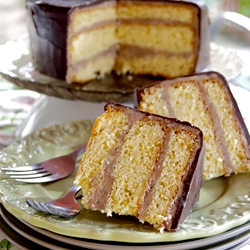
According to my son, lover of gritty urban surroundings, there is an up side to living in deep dark suburbia. "It's tough to be a writer in New York," he told me. "Why would anyone sit and write when you can always take a walk?"
Well, every hour of every day, there are plenty of folks walking the streets of deep dark suburbia, proof, I think, that you don't have to live in an interesting place to take a walk. And nobody, even the most committed power walker, can hoof it all day -- unless you're Forrest Gump, and I've been working really hard lately on distinguishing between reality and fantasy, and I'm pretty sure Forrest is fictional. So if everybody can always take a walk, and everybody has to sit some time, what's wrong with trying to write in a place where you might actually see something on one of your walks, something to capture your own (not to mention your readers') attention. Though I suppose there are some good stories buried deep within the confines of endless white picket fences and aluminum siding, and maybe, things aren't always as dull as they seem. So I've heard.
The truth is, no matter where you are these days, there is a lot of sameness. Main Street, USA, winds its way through major metropolitan areas and small towns both in this country and around the world. The McDonald's in Winnetka, Illinois is a McDonald's like any other, despite suburban planners' attempts to camouflage the truth with a facade suggestive of WASPish old money. The McDonald's on the Champs Elysee in Paris is a McDonald's like any other as well (not to mention a travesty), no matter how much wine they sell with their "extra repas de valeur." It may sound better, but face it, it's still just greasy cow parts on a bun. And French fries are still as about American as it gets.
 This morning, for some reason, I got to thinking about chocolate cake. Not just any chocolate cake.
This morning, for some reason, I got to thinking about chocolate cake. Not just any chocolate cake. Ebinger's chocolate buttercream layer cake from my Brooklyn youth. Chocolate blackout cake was their claim to fame, but I lived for the buttercream, the thick sickeningly sweet layer on the top that I would save for last. The yellow cake was moist and tasty, but really, it was simply there to hold the layers of frosting together. The glue for the ambrosia, a bit of color to break up the monotony on the fork. The only decoration on an Ebinger's buttercream layer cake was the three green pistachio nuts in the center on the top. I never ate them, but I knew they were there. Like the pale green box wrapped in string, it was part of the reassurance I needed, proof that the cake I was about to eat, one layer at a time, was the real deal.
Ebinger's bakery closed in the 1970's, after an almost one hundred year run. I don't think I've ever found a cake I've liked as much; a piece of my sweet tooth simply died when Ebinger's disappeared. Okay, a small piece. You can take your molten lava cakes and your bittersweet ganache and all sorts of death by chocolate concoctions, not to mention the pretty little cupcakes that people line up in droves to buy, the treats that never taste half as good as they look, much less cost. My mom -- yes, the same woman who hid food from me in later years -- always made sure there was an Ebinger's cake waiting for me when I came home from school; as soon as I finished off one, she was off to the bakery for a replacement.
It's not just about the uniqueness of Brooklyn, a place really like no other. It's about the uniqueness of what's local, no matter where you are. The flavor of my youth, a taste that stays with me now, was sweet buttercream and small mom and pop stores and fresh hot chewy bagels that you could literally taste through your nostrils and ambulances screeching by at all hours and bike rides to Coney Island and a mosaic of people you just don't find in deep dark suburbia. Not to mention abrasive accents, which seemed normal to me at the time. Main street USA didn't really exist back then; small towns everywhere, just like Brooklyn, had flavors all their own, special seasonings that shaped the people who grew up there.
These days, even New York City has sold out. The streets of Soho, once a mishmash of bohemian stores and restaurants and apartments, overflows with glitzy chain stores and people who could just as well be shopping at Neiman's. If I can find it in Soho, odds are I can find the same thing here in deep dark suburbia. But there's still a difference, at least from a walker's -- and a writer's -- perspective. In deep dark suburbia, you can walk for miles and see nothing different, except maybe different paint colors on the houses, different models of black Lexus sedans, different styles of Lululemon ensembles. Zoning ordinances exist to keep everything sanitized and very much the same. The local police exist primarily to run people who don't look like the rest of us out of town.
In New York, though, odds are that if you walk long enough, you'll see every color and sort of person you'd ever want to meet (or not meet), and you'll pass through neighborhoods that, while moving toward some degree of sameness, all still retain some sort of unique flavor. So far, superstores and factory style cupcake joints haven't managed to destroy all that.
No matter how much walking you do in the big city, there's always going to be something to write home about. Ebinger's might be gone, but the flavor still lingers.
No comments:
Post a Comment